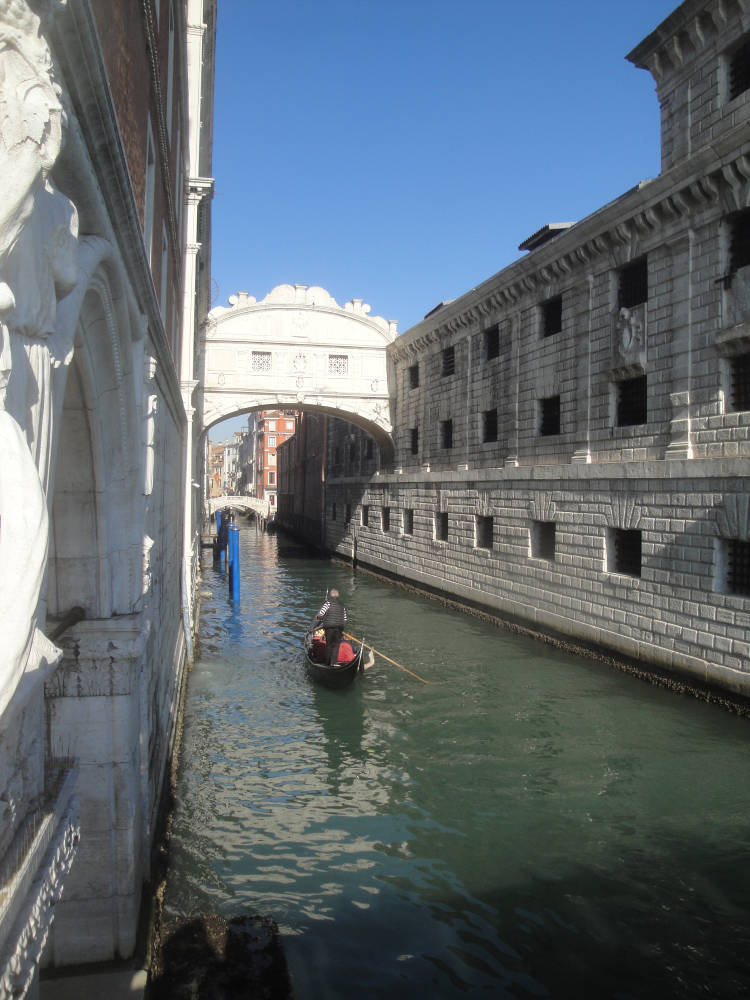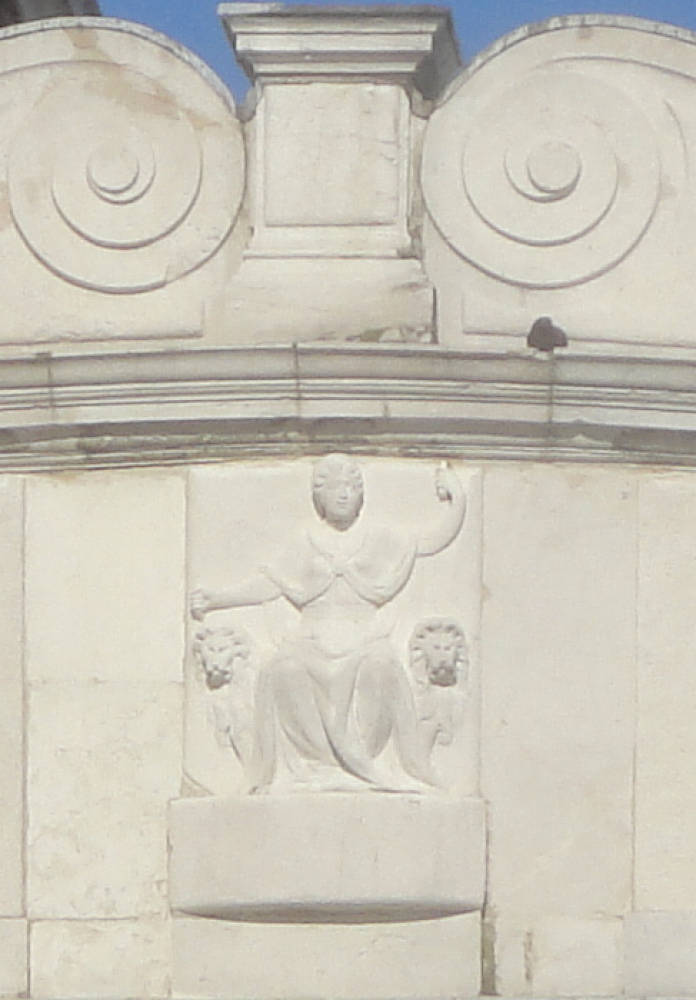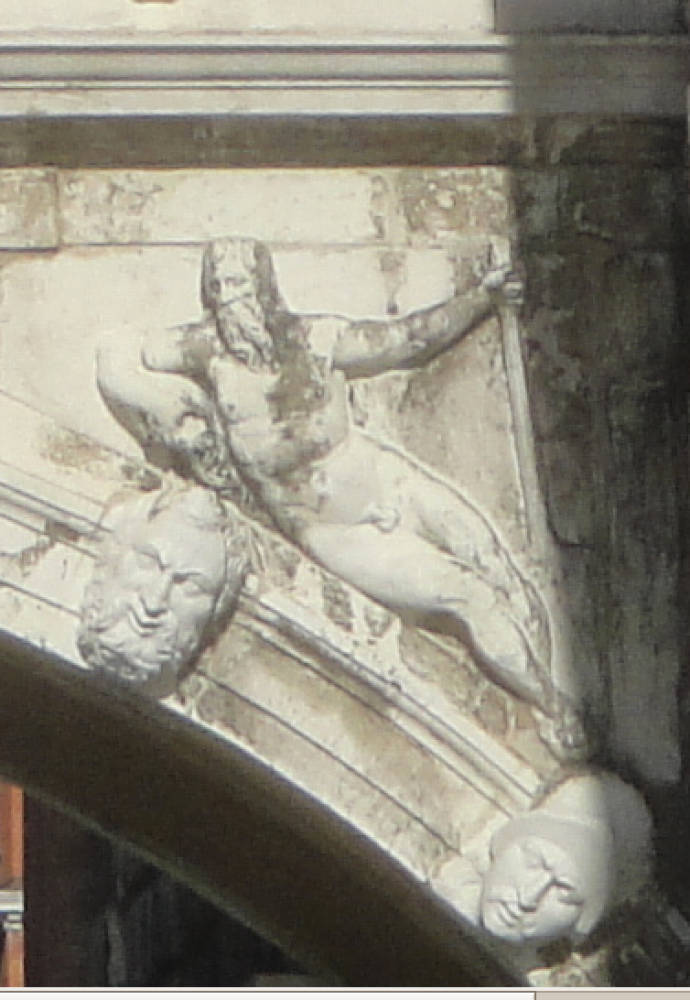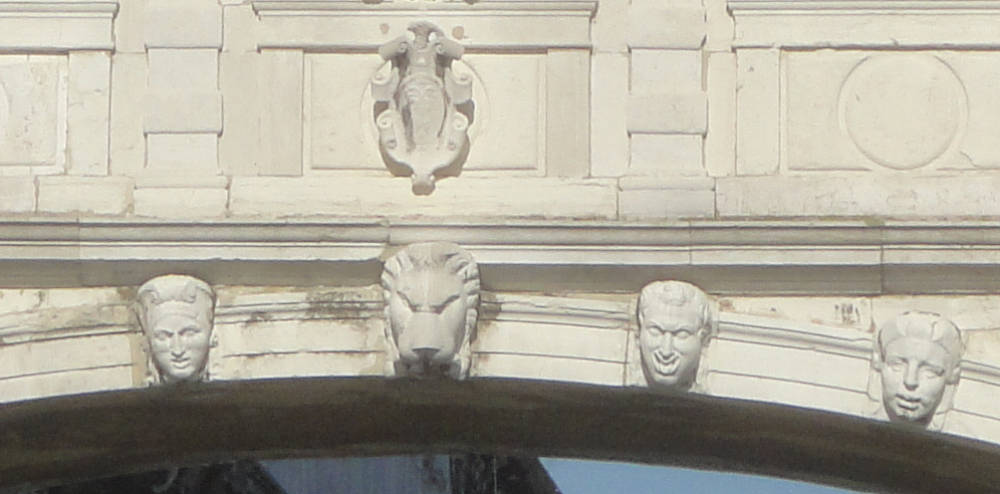
Ponte di Sospiri (The Bridge of Sighs). Architect: Antonio Contino. 1600. The bridge over the Rio di Palazzo della Paglia connects the Palazzo Ducale to the new prison.
Like the Rialto Bridge, the Bridge of Sighs has excited the admiration and imaginations of British artists, writers, and tourists, but as Ruskin points out at the beginning of the second volume of The Stones of Venice, “The Venice of modern fiction and drama is a thing of yesterday, a mere efflorescence of decay, a stage dream which the first ray of daylight must dissipate into dust. No prisoner, whose name is worth remembering, or whose sorrow deserved sympathy, ever crossed that “Bridge of Sighs,” which is the centre of the Byronic ideal of Venice; No great merchant of Venice ever saw that Rialto under which the traveller now passes with breathless interest: the statue which Byron makes Faliero address as of one of his great ancestors was erected to a soldier of fortune a hundred and fifty years after Faliero’s death” (10.8).
The Bridge of Sighs was made famous by Lord Byron, a poet whom Ruskin greatly admired, but he thought too much had been made of it, and, course, for him it also exemplifies the despised Renaissance style with its supposed restraint, patches of unembelished surface, and symmetries — which Ruskin believed signalled the worker's loss of freedom and pleasure in his work.


Left: Looking down the Rio del Palazzo past the Bridge of Sighs to the Grand Canal. “This Rio, or canal,” says Ruskin, “is usually looked upon by the traveller with great respect, or even horror, because it passes under the Bridge of Sighs. It is, however, one of the principal thoroughfares of the city; and the bridge and its canal together occupy, in the mind of a Venetian, very much the position of Fleet Street and Temple Bar in that of a Londoner,—at least, at the time when Temple Bar was occasionally decorated with human heads” (20.330-31). Right: Looking from the Molo di San Marco, the walkway that traverses the side of the Palazzo Ducale next to the Grand Canal.



Three Details: The Bas Reliefs on the Bridge.

First photograph by Landow (October 2000) and all others by Freidus (February 2020). [You may use this image without prior permission for any scholarly or educational purpose as long as you (1) credit the photographer and (2) link your document to this URL in a web document or cite the Victorian Web in a print one.]
�
Created October 2000
Last modified 29 March 2020